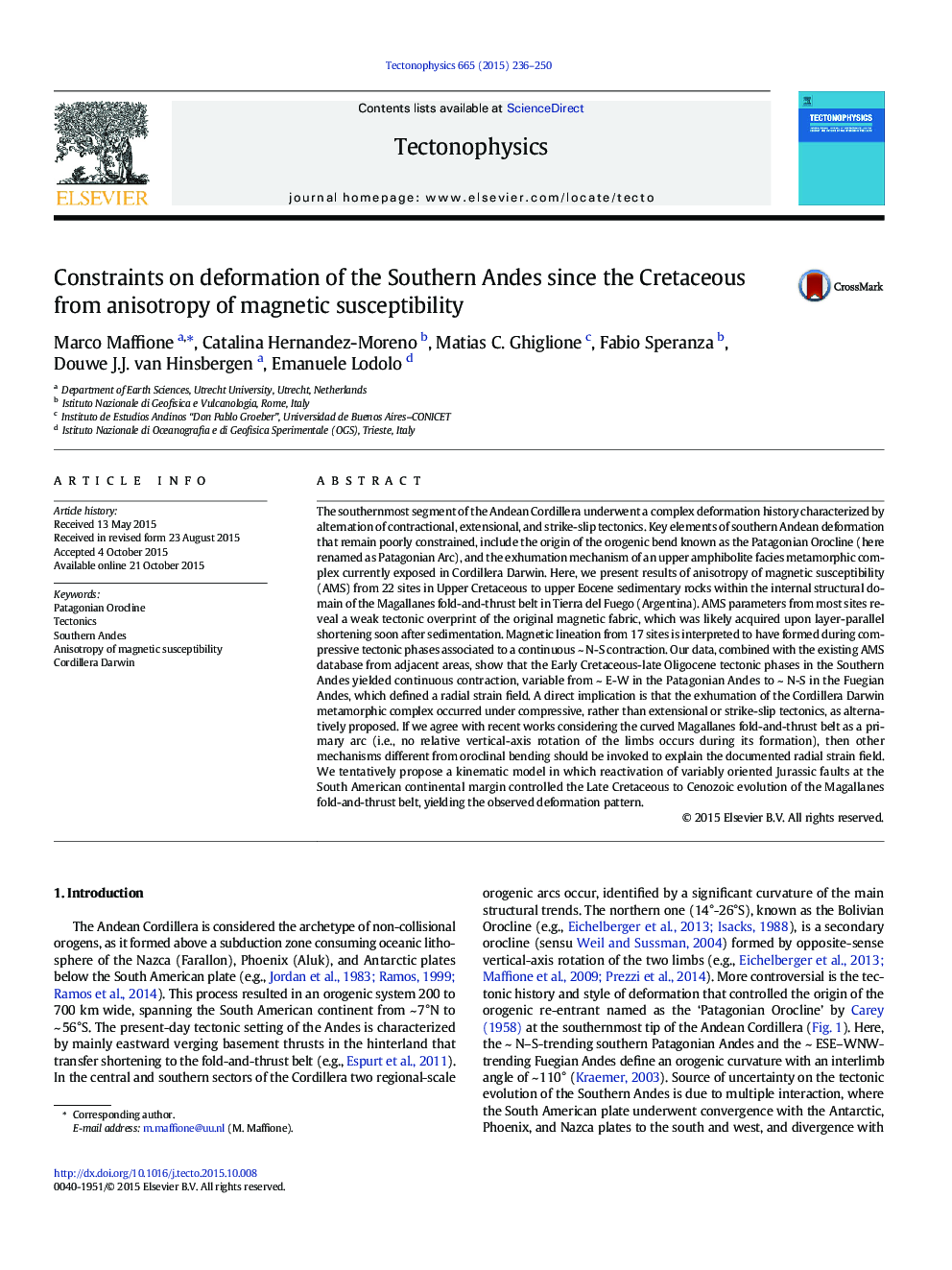| کد مقاله | کد نشریه | سال انتشار | مقاله انگلیسی | نسخه تمام متن |
|---|---|---|---|---|
| 6433506 | 1636730 | 2015 | 15 صفحه PDF | دانلود رایگان |
- Anisotropy of magnetic susceptibility analyses were performed in the Southern Andes
- Continuous (late Cretaceous-Oligocene) contraction affected the Southern Andes
- Cordillera Darwin exhumation occurred under compressive tectonic regime
- Deformation in the Magallanes fold-and-thrust belt defines a radial strain field
- Reactivation of Jurassic faults controlled the formation of orogen's curvature
The southernmost segment of the Andean Cordillera underwent a complex deformation history characterized by alternation of contractional, extensional, and strike-slip tectonics. Key elements of southern Andean deformation that remain poorly constrained, include the origin of the orogenic bend known as the Patagonian Orocline (here renamed as Patagonian Arc), and the exhumation mechanism of an upper amphibolite facies metamorphic complex currently exposed in Cordillera Darwin. Here, we present results of anisotropy of magnetic susceptibility (AMS) from 22 sites in Upper Cretaceous to upper Eocene sedimentary rocks within the internal structural domain of the Magallanes fold-and-thrust belt in Tierra del Fuego (Argentina). AMS parameters from most sites reveal a weak tectonic overprint of the original magnetic fabric, which was likely acquired upon layer-parallel shortening soon after sedimentation. Magnetic lineation from 17 sites is interpreted to have formed during compressive tectonic phases associated to a continuous ~ N-S contraction. Our data, combined with the existing AMS database from adjacent areas, show that the Early Cretaceous-late Oligocene tectonic phases in the Southern Andes yielded continuous contraction, variable from ~ E-W in the Patagonian Andes to ~ N-S in the Fuegian Andes, which defined a radial strain field. A direct implication is that the exhumation of the Cordillera Darwin metamorphic complex occurred under compressive, rather than extensional or strike-slip tectonics, as alternatively proposed. If we agree with recent works considering the curved Magallanes fold-and-thrust belt as a primary arc (i.e., no relative vertical-axis rotation of the limbs occurs during its formation), then other mechanisms different from oroclinal bending should be invoked to explain the documented radial strain field. We tentatively propose a kinematic model in which reactivation of variably oriented Jurassic faults at the South American continental margin controlled the Late Cretaceous to Cenozoic evolution of the Magallanes fold-and-thrust belt, yielding the observed deformation pattern.
Journal: Tectonophysics - Volume 665, 8 December 2015, Pages 236-250
